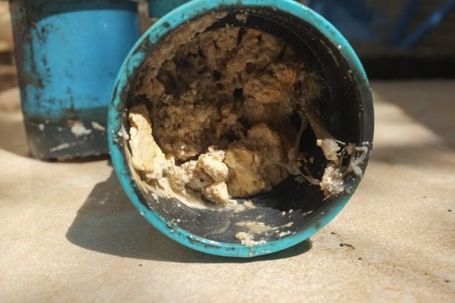Are you plagued by slow drains, frequent toilet clogs, or bad smells coming from your kitchen sink? If so, your home’s drainage system might be in major distress. Rather than reaching for the plunger, it’s time to consider professional drain cleaning.
Below, learn more about how drains get dirty, what problems this can cause, and how different methods of drain cleaning can help.
How Do Drains Get Dirty?
Your home’s plumbing system has two major tasks: to bring you water for use and to take used water (or wastewater) away. The drainage system is the part of your home’s plumbing that carries the wastewater away, usually to the municipal sewer line. Whatever goes down the drain in your toilets, sinks, bathtubs, and showers must take a trip through your home’s drainage system.
That means that along with wastewater, other things often end up in drains as well:
Food
Grease and cooking oils
Soap scum (mainly if you use bar soap)
Hair
Skin
Paper and waste from the toilet
Hard water buildup (scale deposits)
Over time, these things accumulate in your pipes, coating the pipe walls with stubborn buildup.
What Problems Do Dirty Drains Cause?
Filthy drains can lead to several issues:
Bad Smells: The waste accumulation in your drainage system can smell terrible, causing your pipes to stink and attract what aptly known as drain flies.
Slow Drains: Gunky buildup in drainage pipes restricts water flow.
Clogs: If the buildup gets bad enough, eventually, nothing will be able to pass through.
Pipe Corrosion: Clogged or slow-draining pipes get exposed to standing water, which can lead to corrosion, particularly if the water is acidic. Corrosion that’s bad enough can result in pinhole leaks.
How Does Drain Cleaning Help?
Professional drain cleaning removes whatever is causing a blockage in your home’s drainage system. These are the main methods that plumbers use.
1. Drain Snaking
When you have a clog that a plunger can’t solve, drain snaking is usually the way to go. For this drain cleaning method, plumbers use a tool called a drain snake. The tool is made of a long, metal cable with an auger at the front. The plumber winds the snake down into the drain until making contact with whatever is causing the clog and uses the auger to dislodge the blockage.
2. Drain Jetting
Drain jetting (also called hydro-jetting or water jetting) not only clears blockages in your pipes but also blasts away the buildup lining the pipe walls. The process involves a high-pressure hose with a specialized nozzle. The hose is attached to a large water tank. As the hose moves through a pipe, water jets out with so much force that it clears away the residue inside.
People tend to think of drain cleaning as a solution to a clogged drain, which is accurate when it comes to drain snaking. However, drain jetting can be a form of preventative maintenance. It helps keep your pipes clear of debris as well as standing water that can lead to corrosion and pinhole leaks. In that way, drain jetting can prolong your plumbing system’s lifespan.
Bottom Line
If you’re experiencing a stubborn clog that you can’t solve with a plunger, it’s time to try drain snaking. If you’re already experiencing frequently clogged drains in more than one area of your home, drain jetting might be the best long-term solution to what can ultimately become a bigger plumbing issue.
Not sure what’s causing the clog in your home’s plumbing? At ServiceOne Air Conditioning & Plumbing, our pet-friendly team has the tools and the experience to safely and properly clear the blockage. Call us at (407) 499-8333 or contact us online!

